Have you ever gazed at a patch of bare earth, yearning for the vibrant tapestry of a mature garden, but without the patience for years of waiting? As a master gardener, I’ve heard this sentiment countless times. The good news is, you don’t have to wait! With the right selection of fast-growing native plants, you can inject immediate life and dazzling color into your landscape, creating a garden that feels established and full of personality in a single season. These resilient beauties not only provide instant gratification for the eye but also offer incredible ecological benefits, supporting local wildlife and thriving with minimal fuss. Join me as we explore a dozen horticultural heroes that will transform your garden from a dream to a vibrant reality with remarkable speed.
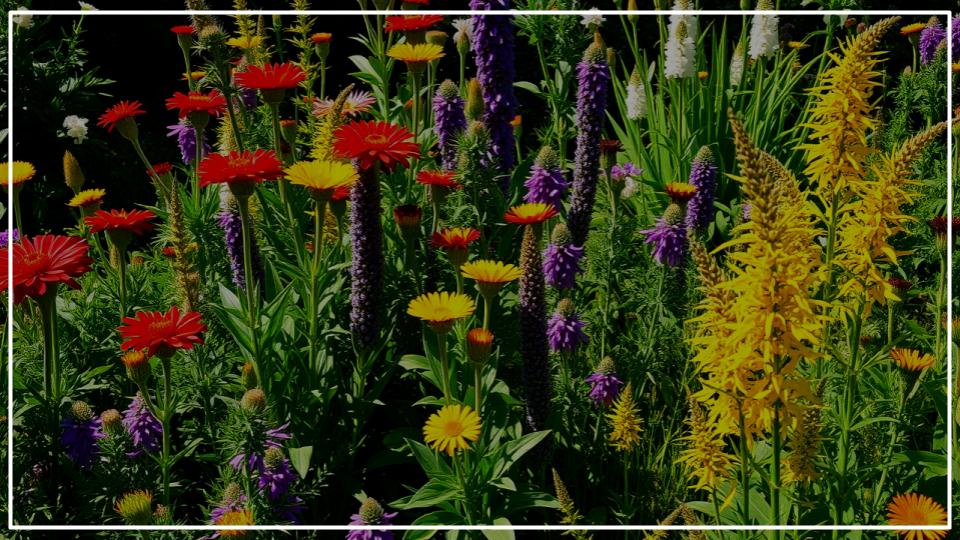
Quick Tips:
- Right Plant, Right Place: Match your chosen native plants to your specific sun, soil, and moisture conditions for optimal growth and bloom.
- Embrace Biodiversity: Select a variety of bloom times and plant forms to ensure continuous color and support for pollinators.
- Water Wisely: While natives are drought-tolerant once established, young plants need consistent moisture to root deeply and grow quickly.
- Resist Over-Fertilizing: Many native plants are adapted to leaner soils and can become leggy or unhealthy with too much enrichment.
- Enjoy the Buzz: Revel in the increased presence of butterflies, bees, and hummingbirds drawn to your thriving native ecosystem.
Why Fast-Growing Native Plants Matter for Instant Color
The desire for instant gratification isn’t just about impatience; it’s about seeing the fruits of your labor quickly and enjoying your outdoor space sooner. And when it comes to gardening, fast-growing native plants are truly the superstars of speed and sustainability. Unlike many exotic species, natives are already perfectly adapted to your local climate and soil conditions, meaning they expend less energy on acclimating and more on robust growth and prolific flowering. This inherent resilience translates into quicker establishment and a rapid burst of color, often within their first year.
Beyond the immediate visual impact, planting natives offers profound ecological benefits. They provide essential food and habitat for local wildlife, from critical nectar sources for pollinators like bees and butterflies to seeds and berries for birds. By choosing native, you’re not just painting your garden with color; you’re actively participating in the restoration of local ecosystems, creating a vibrant, living landscape that supports the biodiversity of your region. In my own garden, I’ve found that integrating even a few native species dramatically increases the number of beneficial insects and birds, turning a simple backyard into a lively sanctuary.
Choosing Your Palette: 12 Stellar Performers
When selecting your fast-growing native plants, consider the specific conditions of your garden: sun exposure, soil type, and moisture levels. Here are 12 remarkable native plants known for their rapid growth and stunning floral displays, suitable for various regions across North America.
For Sunny Spots & Dazzling Blooms:
Purple Coneflower (Echinacea purpurea)
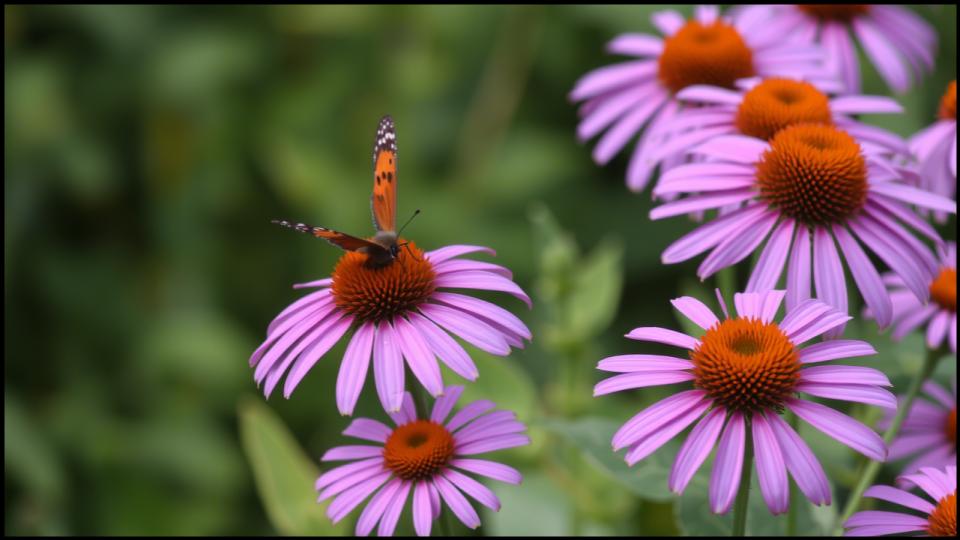
- Description: A classic, iconic prairie plant, Echinacea purpurea boasts large, daisy-like flowers with distinctive raised central cones and petals ranging from vibrant purple to soft pink. They are magnets for butterflies and bees.
- Growth Habit: Reaches 2-5 feet tall. Known for rapid establishment from seed or plant, often blooming profusely in its first full season.
- Why it’s fast & colorful: Extremely adaptable and resilient, coneflowers quickly produce a profusion of long-lasting blooms from early summer to fall.
Black-Eyed Susan (Rudbeckia hirta)
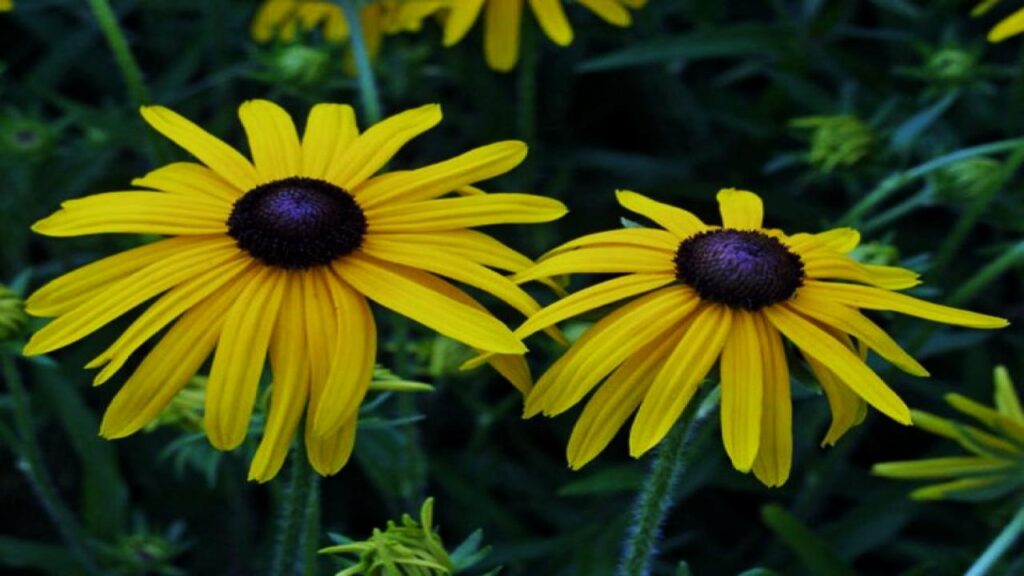
- Description: Instantly recognizable with its golden-yellow petals surrounding a dark brown central cone. Black-eyed Susans evoke classic meadow charm and are incredibly cheerful.
- Growth Habit: Typically 1-3 feet tall. Can grow from seed to flower in one season, especially in full sun.
- Why it’s fast & colorful: A prolific bloomer, Rudbeckia hirta blankets areas with vibrant yellow, providing continuous color from mid-summer through fall.
- Expert Insight: “A common mistake I see with Black-Eyed Susans is overwatering once established; they prefer drier conditions and well-draining soil to truly thrive,” notes horticultural expert Dr. Doug Tallamy in his research on native plant ecosystems.
Lanceleaf Coreopsis (Coreopsis lanceolata)
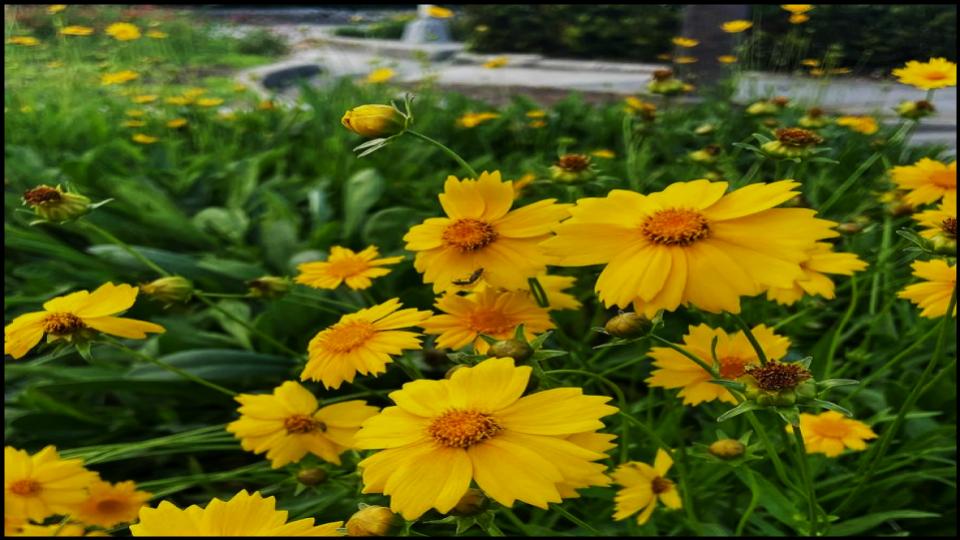
- Description: Sunny yellow, daisy-like flowers held atop slender stems. This cheerful perennial forms lovely clumps and can even self-seed to expand its presence.
- Growth Habit: Grows to 1-2 feet. Flowers readily from seed in its first year and quickly forms a robust clump.
- Why it’s fast & colorful: Its profusion of bright yellow blooms creates a sunny spectacle throughout the summer, making it a reliable source of instant garden color.
Wild Bergamot (Monarda fistulosa)
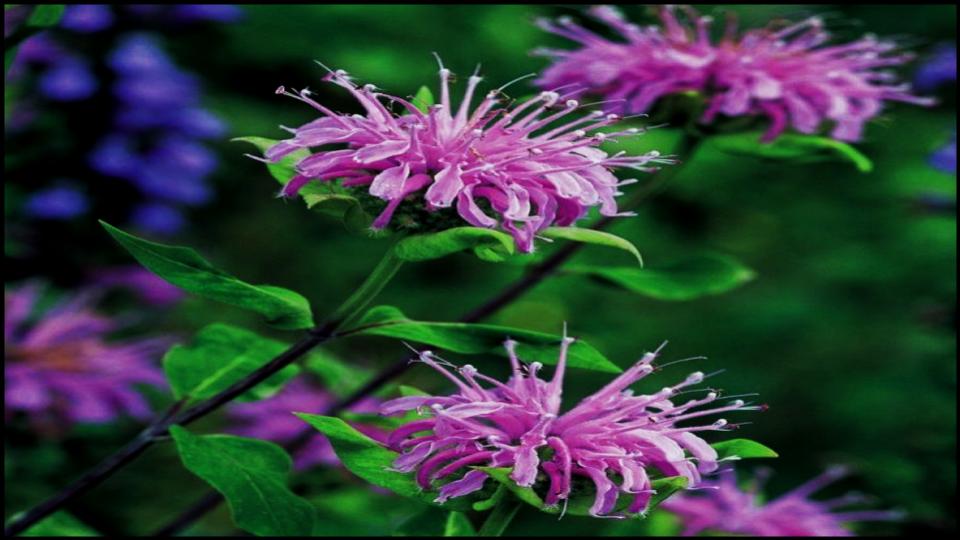
- Description: Also known as Bee Balm, this plant produces unique, shaggy lavender-pink to purple flowers that attract an array of pollinators, particularly bees and hummingbirds. It also has a pleasant, minty fragrance.
- Growth Habit: Reaches 2-4 feet. Spreads quickly by rhizomes, establishing a dense clump within a year or two.
- Why it’s fast & colorful: The distinctive flower heads are borne in abundance, creating a vibrant display and a pollinator paradise from mid-summer onwards.
For Partial Shade & Woodland Edges:
Wild Columbine (Aquilegia canadensis)
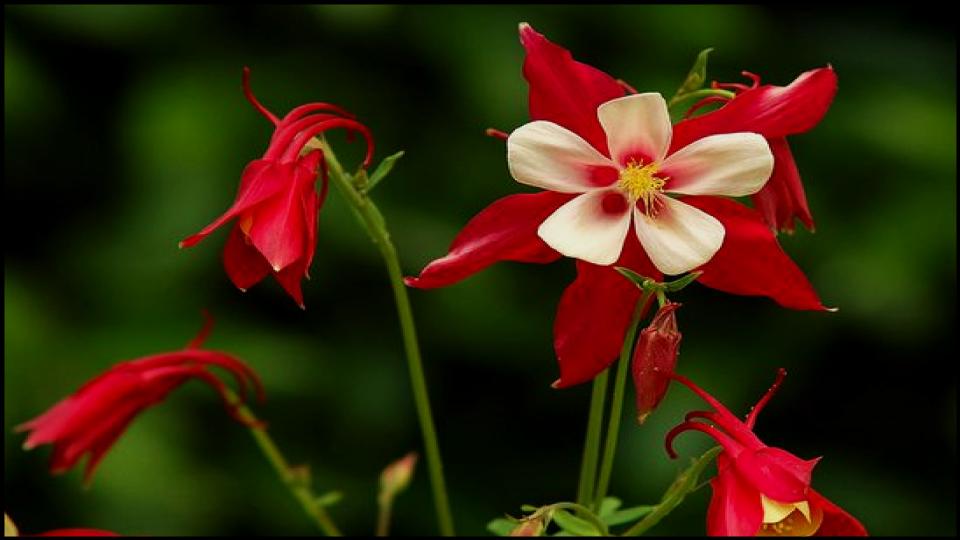
- Description: Delicate, nodding flowers with a unique spurred shape in shades of red and yellow. These charming blooms are a favorite of hummingbirds.
- Growth Habit: Typically 1-3 feet tall. Establishes quickly and will readily self-seed in appropriate conditions, though it may take a full year to flower from fresh seed.
- Why it’s fast & colorful: While individual plants might not be massive, they colonize readily, filling in areas with their distinctive, early-season blooms.
Bleeding Heart (Dicentra spectabilis)
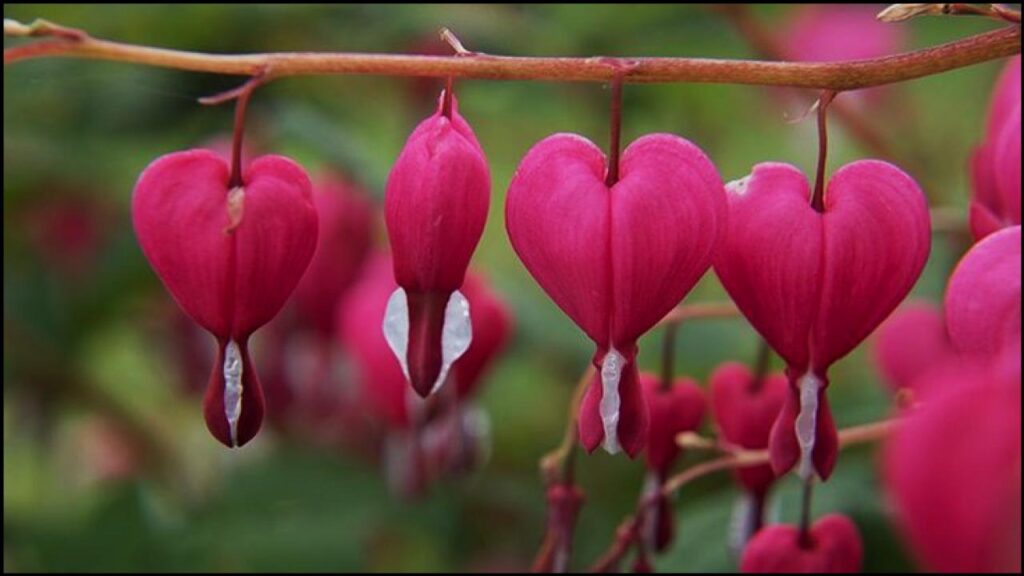
- Description: While not strictly native to North America (the common garden variety is Asian), several species of native Dicentra like Western Bleeding Heart (Dicentra formosa) offer the same charming heart-shaped flowers in shades of pink, red, and white. They bring an exquisite touch to shady spots.
- Growth Habit: Grows to 1-2 feet. Spreads steadily by rhizomes to form elegant clumps.
- Why it’s fast & colorful: These plants emerge early in spring, offering a flush of unique, colorful blooms when little else is flowering in the shade.
Foamflower (Tiarella cordifolia)
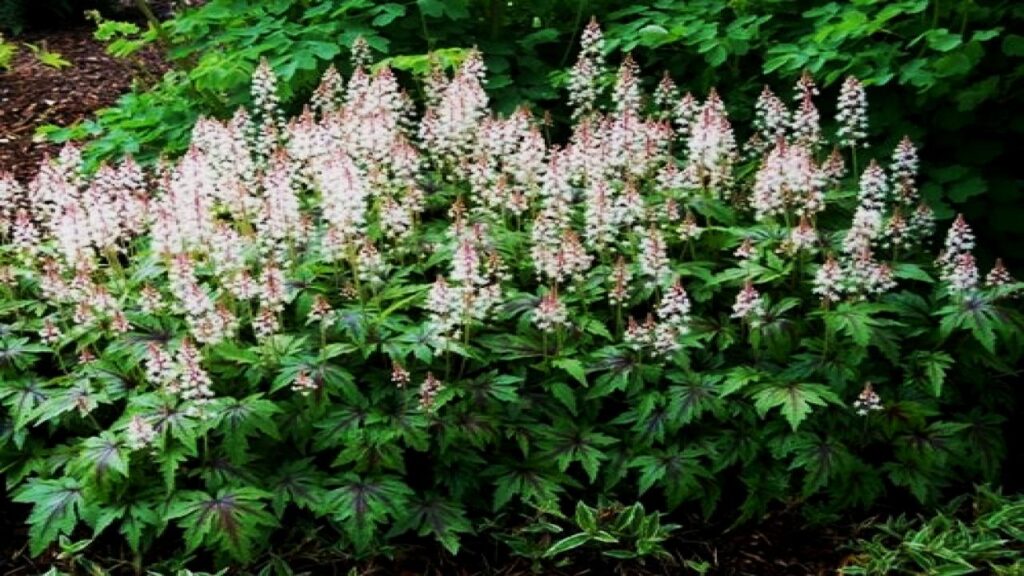
- Description: A delightful woodland groundcover, Foamflower produces airy spires of foamy white to pale pink flowers in spring. Its attractive, often lobed foliage adds year-round interest.
- Growth Habit: Forms a dense groundcover, spreading by stolons. Flowers quickly after establishment.
- Why it’s fast & colorful: Creates a soft, luminous carpet of color in early spring, brightening up shady areas with its delicate blooms.
For Damp Areas & Rain Gardens:
Cardinal Flower (Lobelia cardinalis)
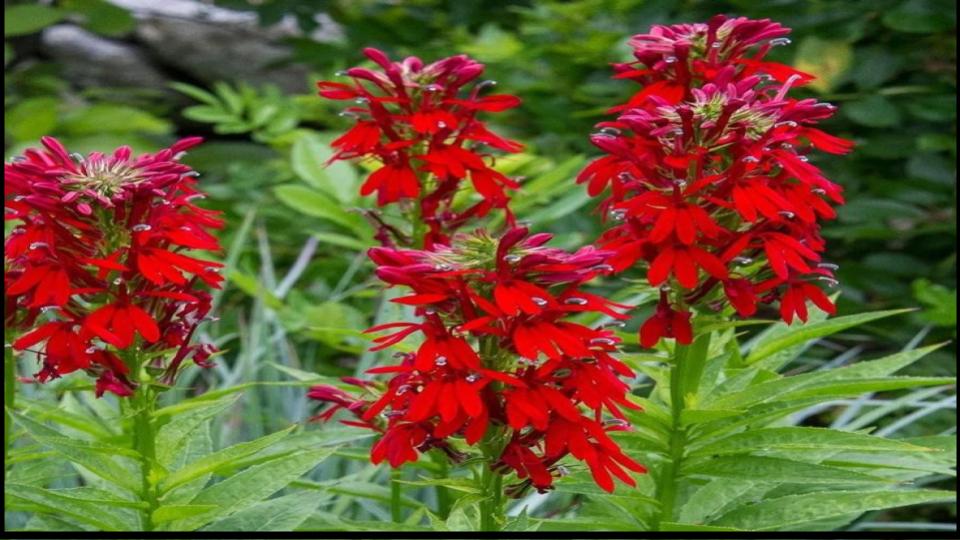
- Description: A true showstopper, Lobelia cardinalis boasts brilliant, fiery red flower spikes that are irresistible to hummingbirds. It thrives in consistently moist to wet soil.
- Growth Habit: Reaches 2-4 feet tall. Establishes relatively quickly, often blooming in its first year from a young plant.
- Why it’s fast & colorful: The intensity of its red flowers provides an unparalleled pop of color in late summer, attracting immediate attention.
Great Blue Lobelia (Lobelia siphilitica)

- Description: Similar in form to its red cousin, this lobelia features stunning spikes of deep blue flowers. It’s equally at home in moist conditions and adds a cooler tone to the late-season garden.
- Growth Habit: Grows 2-3 feet tall. Like Cardinal Flower, it establishes and flowers readily.
- Why it’s fast & colorful: The striking blue hue is uncommon in many native plant palettes, making it a standout for late summer and early fall vibrancy.
Versatile & Adaptable:
Dense Blazing Star (Liatris spicata)
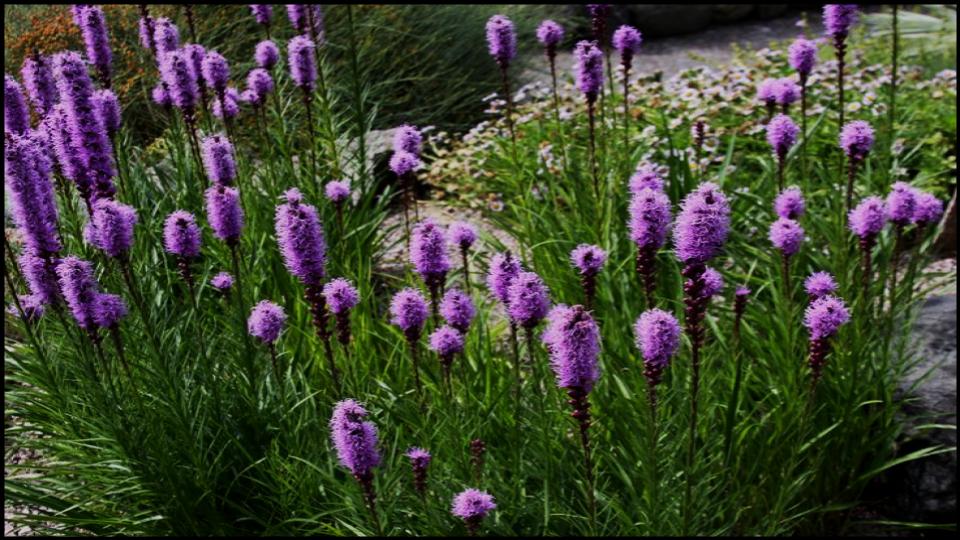
- Description: Tall, upright spikes covered in fuzzy, button-like purple flowers that open from the top down. A stunning vertical accent that is a pollinator magnet.
- Growth Habit: Grows 2-5 feet. Establishes quickly from corms or young plants, blooming in its first year if conditions are right.
- Why it’s fast & colorful: Its unique bloom habit and vibrant purple color make it an instant focal point and a beacon for butterflies in mid to late summer. My go-to variety for this is ‘Kobold Original’ because of its compact size and prolific blooms.
New England Aster (Symphyotrichum novae-angliae)
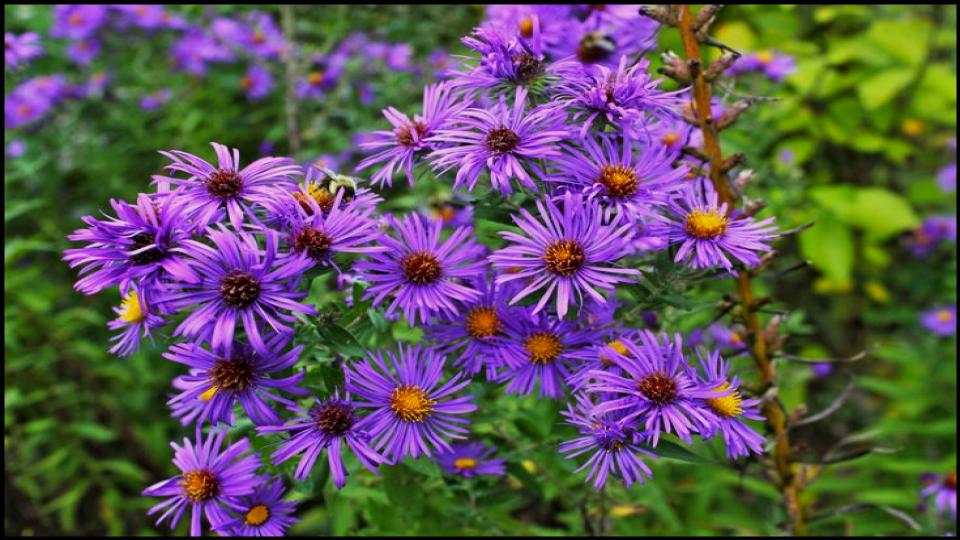
- Description: A quintessential fall bloomer, this aster produces an abundance of daisy-like flowers in shades of purple, pink, and white. Critical late-season nectar source for migrating monarchs.
- Growth Habit: Can reach 3-6 feet. Grows very quickly in spring and summer to produce a massive floral display in autumn.
- Why it’s fast & colorful: Provides an unparalleled burst of color just when many other plants are fading, extending the garden’s vibrant season well into fall.
Wild Geranium (Geranium maculatum)
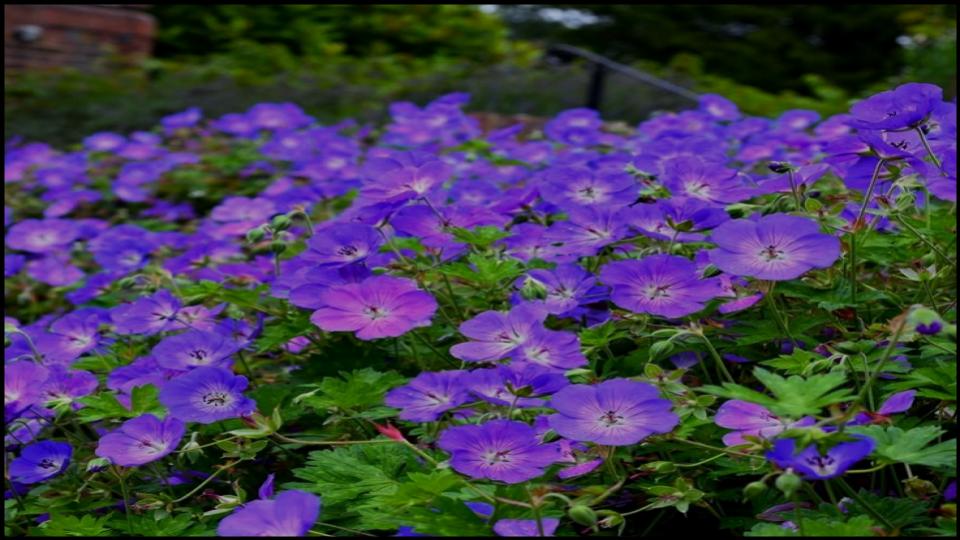
- Description: Delicate, five-petaled flowers in shades of pink purple to lavender. These woodland native forms attractive clumps and provides early-season color.
- Growth Habit: Reaches 1-2 feet. Spreads steadily to form an appealing groundcover.
- Why it’s fast & colorful: Its abundant blooms in spring and early summer add a charming, naturalistic feel and a soft pop of color to the garden.
Care and Maintenance Tips for Speedy Success
While these plants are naturally resilient, a little thoughtful care, especially in their first season, will ensure they grow quickly and provide that instant burst of color you’re craving.
- Preparation is Key: Start with well-draining soil. Most native plants don’t require highly enriched soil, but good drainage is paramount. If you have heavy clay, consider amending with compost.
- Watering: The crucial first few weeks are about consistent moisture. Water young plants regularly until their root systems are established. Once mature, many native plants are quite drought-tolerant, reducing your long-term watering needs.
- Mulching: A 2-3 inch layer of organic mulch (like shredded bark or compost) will help retain soil moisture, suppress weeds, and regulate soil temperature, giving your new plants a head start.
- No Need for Over-Fertilizing: Many native plants are adapted to leaner soils. Excessive fertilization can lead to leggy growth and reduced flowering. If your soil is very poor, a light application of compost in spring is usually sufficient.
- Patience (Just a Little!): While they are fast growers, remember that the first year is often about establishing a strong root system. You’ll see good growth and color, but they’ll truly hit their stride in subsequent seasons.
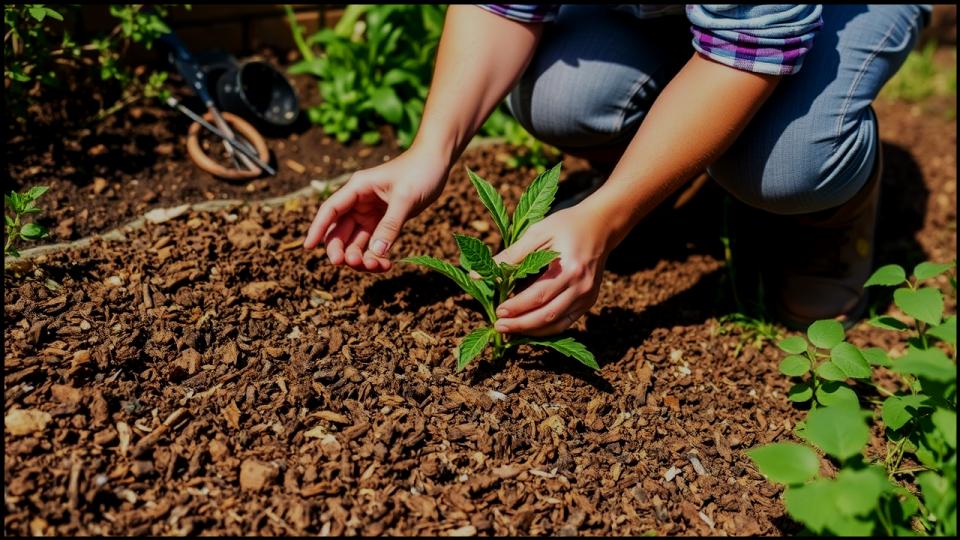
There’s an undeniable joy in watching a garden come to life, and with fast-growing native plants, that joy can be almost immediate. These resilient, beautiful powerhouses not only deliver stunning, vibrant color with remarkable speed but also create a living, breathing ecosystem that supports the very essence of your local environment. From the cheerful yellow of Coreopsis to the fiery red of Cardinal Flower, the options for instant garden color are abundant and ecologically sound. So, roll up your sleeves, select your favorites, and prepare to be amazed as your garden transforms before your very eyes, painting a masterpiece of natural beauty that will bring joy for seasons to come. Now you’re ready to cultivate a garden that’s not just beautiful, but also truly alive!
Read More
Propagate a Lemon Tree: Your Guide to a Lifetime of Homegrown Citrus
